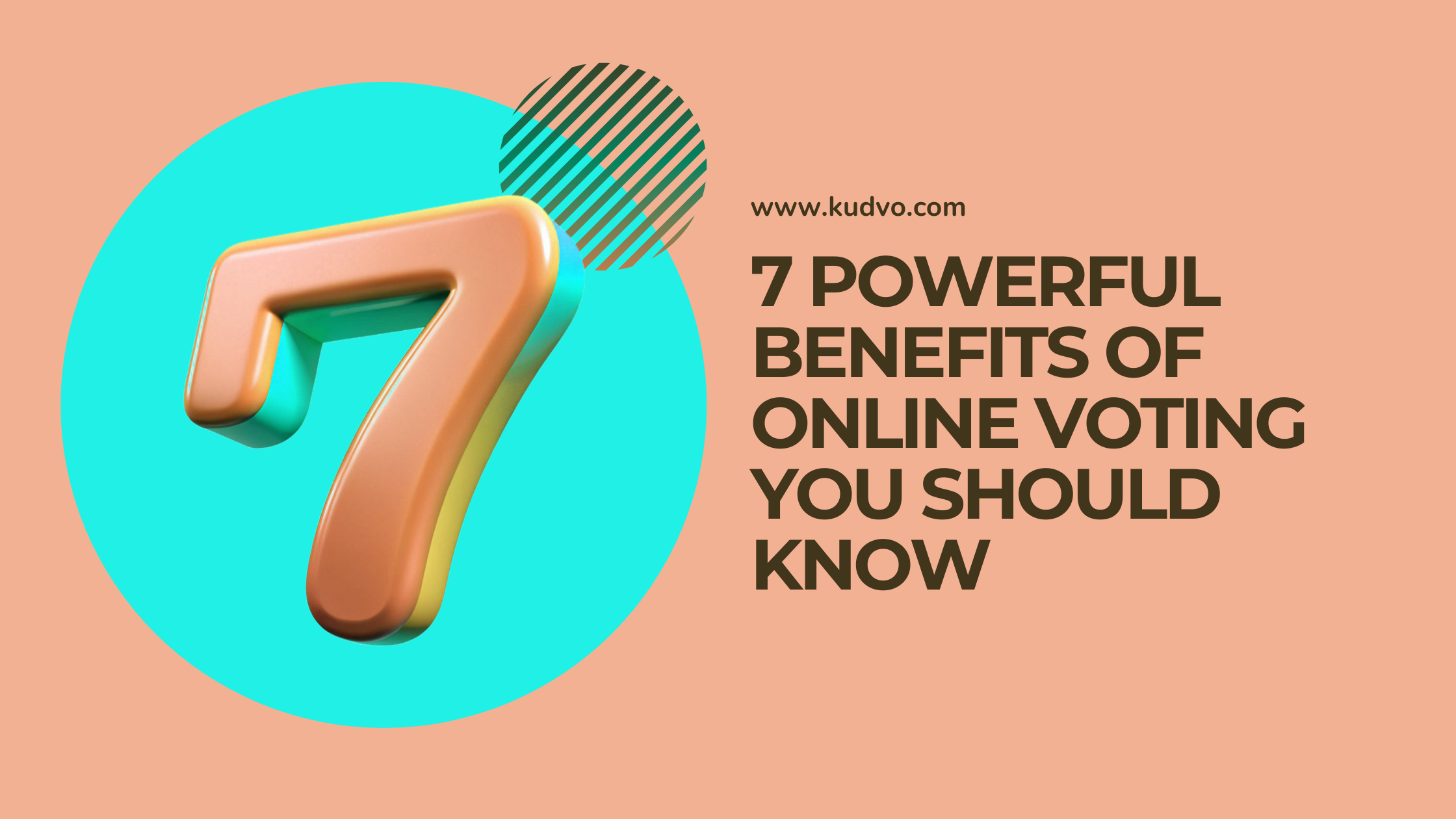7 Powerful Benefits of Online Voting You Should Know
Introduction
Imagine casting your vote from your couch—in minutes. No lines, no travel, no hassle. In a world where almost everything is digital, it only makes sense that voting catches up.
Online voting is gaining momentum as a secure, efficient, and inclusive solution to traditional voting challenges. It’s not just about convenience—it’s about strengthening democracy by making voting more accessible for everyone.
In this post, we’ll walk through seven powerful benefits of online voting and why they matter for voters, governments, and the future of elections. By the end, you’ll understand why more countries and communities are adopting this game-changing technology.
And hey, if you’re curious about accessibility in tech, check out Kudvo—they’re doing great work in making digital platforms inclusive.
1. Greater Accessibility for All Voters
One of the biggest wins of online voting is how it removes physical and logistical barriers.
It’s especially beneficial for:
People with disabilities
Seniors with mobility issues
Citizens living abroad or in remote areas
Instead of navigating crowded polling stations or inaccessible booths, voters can participate from wherever they are—independently and privately.
Case in point: Estonia, a pioneer in online voting, enables citizens to vote from anywhere in the world with just a secure ID card.
2. Increased Voter Turnout
When voting is easier, more people participate. It's that simple.
Online voting:
Eliminates the need to travel or take time off work
Allows voting during more flexible hours
Offers a user-friendly experience that encourages engagement
Countries and cities that have piloted online voting have seen notable increases in participation, particularly among young voters and those living overseas.
3. Improved Accuracy and Fewer Errors
Manual processes leave room for human error—think misread ballots, unclear marks, or counting mistakes.
Online voting platforms:
Provide instant error-checking
Ensure only complete ballots are submitted
Reduce the need for manual tabulation
This leads to cleaner, faster, and more reliable results, giving voters and officials more confidence in the process.
4. Faster Vote Counting and Results
Counting paper ballots can take hours—or even days. But with online voting, results can be calculated almost instantly after polls close.
Key benefits include:
Real-time tabulation
Faster public reporting
Reduced administrative costs and workload
Speed doesn't compromise accuracy—if anything, automated systems enhance precision.
5. Cost Savings Over Time
While setting up an online voting system has initial costs, it can save money long term by reducing:
Paper and printing expenses
Staffing needs for polling locations
Transportation and logistics
As usage scales, online voting becomes a cost-effective solution, especially for local governments managing tight budgets.
6. Enhanced Security and Transparency
Security is a common concern—and rightly so. But online voting systems have evolved to meet the challenge.
Modern platforms use:
End-to-end encryption
Blockchain for secure audit trails
Multi-factor authentication
When done right, these systems are as secure—if not more—than traditional methods. Transparency features also help build public trust.
7. Eco-Friendly and Paperless
Last but not least, online voting is a green alternative to paper-based systems.
By going digital, we:
Cut down on paper waste
Reduce emissions from voter transportation
Minimize the carbon footprint of election logistics
It’s a small but meaningful step toward sustainable civic engagement.
Conclusion
Online voting is more than a tech upgrade—it’s a solution to the most persistent challenges in modern elections. From accessibility and security to speed and cost, the benefits are too powerful to ignore.
As technology continues to evolve, embracing secure and inclusive voting platforms is essential. Let’s ensure everyone has a voice—without barriers.
👉 Want to learn more about accessible digital tools? Visit Kudvo to see how they’re leading the way.
